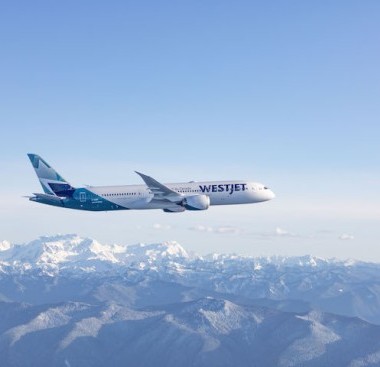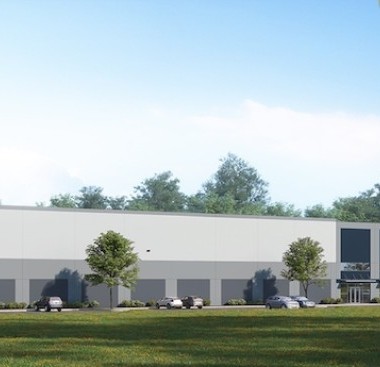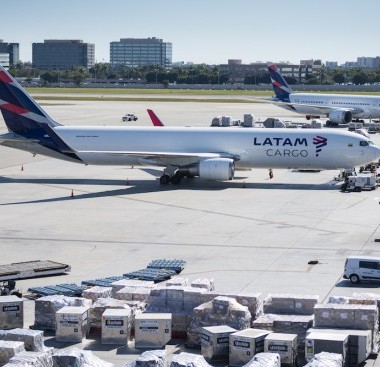Wan Hai exec says Port of Oakland has growth potential & challenges
The Port of Oakland has the potential to grow as a port, especially with agricultural exports if it fast-tracks new investments in transloading, refrigeration, rail services and a turning basin widening, according to Andrew Hwang, Director of Transpacific Export and Government Affairs, Wan Hai Lines.
Hwang noted that one advantage for the Port of Oakland is that it is the last port of call for many ocean carriers sailing to California and so exports, including agricultural exports, have the shortest sailing time from the U.S. West Coast to Asian destinations.
Hwang said Wan Hai is soon to deploy a fleet of new 13,000 TEU (twenty-foot unit container) ships that will enhance the carrier’s competitiveness: “Wan Hai has been in the shipping business north of 50 years. As a carrier, we have been very nimble. We have very strong leadership. And if you look at the history of Wan Hai, we are a company that is extremely well run. We have made investments to get into the deep-sea trade as evidenced by the new vessels we've ordered … I believe that Wan Hai as a carrier is very well positioned in the market, and it is very well respected in the market.”

Challenges for U.S. Exporters
In an interview with AJOT, Hwang said that U.S. exporters are facing two serious problems selling to Asia:” All exporters including agricultural exporters have suffered because of the 2017 U.S. imposition of tariffs on Chinese imports. This has resulted in a 30% reduction in container moves between the United States and China.”
This occurs at the same time “as high interest rates have made the U.S. dollar and U.S. exports more expensive in China, Korea and other Asian countries: It may be good if you’re an American traveling to Asia, but it is not so good if you are a U.S. exporter selling to Asia.”
O-MAST
Hwang a former Director of Marketing at the Port of Oakland praised the adoption of infrastructure priorities by stakeholders and Port officials as identified by the newly formed stakeholder group, the Oakland Maritime, Access, Sustainability, and Trade (O-MAST) coalition – a partnership of maritime, transportation, logistics, labor, and community stakeholders. Many of the participants were veterans of the successful opposition that defeated Oakland A’s attempt to build a ballpark and condominiums at the Port of Oakland’s Howard Terminal.
On April 2nd, O-MAST announced a series of infrastructure investments that maritime stakeholders would like to see made at the Port of Oakland based on a survey conducted by the public relations firm Berg Davis including road improvements, widening the Turning Basin that serves the Oakland International Container Terminal operated by SSA and a truck corridor linking the Port to nearby freeways.
Priorities included the following:
- Industrial Lands
- Minimizing/prohibiting residential development adjacent to industrial lands and freight corridors
- Maintaining the buffer zone/uses between downtown and the waterfront.
- Repairing and maintaining access to overweight corridors
- Preserving or increasing jobs in the maritime industry
- Commercial Options for Howard Terminal
- Zero-emission transition
- EV charging, offshore wind, and hydrogen hub
- Parking and cargo staging
- Breakbulk operations
- Ro/Ro operations
- Infrastructure
- Turning Basin expansion
- Terminal electric and hydrogen infrastructure
- Charging and alternative fueling
- Adeline Bridge replacement
- Funding Allocation for Infrastructure
- Adeline Street corridor
- 3rd Street truck corridor
- On-dock rail project
Road congestion and improvement
At the April 2nd presentation hosted by the Propeller Club of Northern California, Port of Oakland Executive Director, Danny Wan, told maritime stakeholders that if they want improvements in the operations and upgrades in the infrastructure at the Port of Oakland, they must rekindle the energy and spirit that they exhibited in successfully opposing the Oakland A’s ballpark and condominium project at the Port’s Howard Terminal site. Wan said, “I need that high energy that I saw during that ballpark debate to come out.”
Wan said a major issue that the Port has been trying to win at the Oakland City Council is support for a truck corridor accessing the Port of Oakland to improve truck flows. He urged maritime stakeholders to “Show the City Council the need for the truck corridor. We have not been able to get the City Council to move on the truck corridor. They are concerned that if you put a truck corridor next to a neighborhood, that the neighbors will complain. And the neighbors do complain. And we don’t have anybody speaking for this truck corridor except for me, and Bryan (Brandes, the Port Maritime Director) and the Harbor Commissioners. That’s not enough. We are not necessarily their voters. We need you to come out and say to the City Council: ‘Where is that truck corridor? Or else, something is going to happen to the economy of this City.’”
Hwang said the Port needs to make the investments outlined by the OMAST survey of stakeholders as soon as possible to keep the support of agricultural exporters and importers.
Land Use Plan & Other Priorities
Hwang added that the Port of Oakland needs to deliver the land use plan sooner rather than later and all Port stakeholders need to support the Port in that effort. The controversy over the Howard Terminal Ballpark and the pandemic slowed down a lot of actions and proposed investments. Soliciting proposals for Howard Terminal needs to move faster and the infrastructure dollars awarded nine months ago need to be urgently put to work.
Hwang also identified other priorities:
- Oakland can be the gateway for much more refrigerated exports from California and the interior of the United States.
- Reconfiguring the Oakland Bulk & Oversize Terminal (OBOT) from projected coal exports to agricultural exports and facilitating rail car transloading. He points out that one train per week going to the terminal could generate between 400- 500 containers per train load, “and that over a period of 52 weeks, could generated 26,000 forty-foot containers or 26,000 twenty-foot unit container moves to the Port of Oakland per year from Midwest ag exporters.”
- Increased transload construction on Port property including from the former Oakland Army Base property. Hwang identified the ‘800’ series buildings at the Oakland Army buildings, which he says “should be rebuilt There are three or four buildings that could be used for transloading that could generate an additional 50,000 twenty-foot container moves per year.
Progress on Reefer Capacity
In March, Port of Oakland Maritime Director Bryan Brandes noted progress on refrigeration: “We do have several cold facilities …. within the port complex…. Cool Port Oakland being our largest. But we also have PCC Logistics now adding additional reefer transloading and warehouse storage.”
Increased Rail
Hwang says combining, the proposal of OBOT reuse of agricultural rail shipments and the additional transloading from the former Oakland Army Base, creates the possibility of generating an additional 100,000 TEUs (twenty-unit container) business for the Port of Oakland.
Hwang supports the Port of Oakland’s plan to expand inland port rail connections between the Port of the new facility being completed at Reno, Nevada as referenced by Maritime Director Bryan Brandes in a March AJOT interview.
Hwang explained that the push for zero emission trucking in California might be more expeditiously achieved if developed in combination with short haul rail services. For example, reducing longer distance trucking to locations such as Reno, Nevada might more practically be handled by a short distance rail service between Reno, Nevada warehouses and the Port of Oakland: “The issue of speed is an issue, but consistency is also an issue. And if there is a reliable source of containers coming out of a rail service between Reno and Oakland, that could offset some of the speed advantages.”
Threat Posed By Proposed San Joaquin Valley Rail Hub Linking Port of LA
For similar reasons, Hwang feels that the proposed inland rail hub at Merced California to the Port of Los Angeles may affect the flow of cargo in and out of the region.
A rail service linking agricultural exporters in California’s San Joaquin Valley to the Port of Los Angeles could begin in 2028, according to Eugene Seroka, Executive Director, Port of Los Angeles. In 2017, California’s Merced County Supervisors unanimously agreed to enter an agreement with the Port of Los Angeles in hopes of creating an inland port at the former Castle Air Force Base site.
At his September 14th, 2023, media briefing, Seroka said: “From the standpoint of the Port of Los Angeles, we're very encouraged to see the State of California invest nearly $50 million into the development of an inland port at the former Castle Air Force Base in Merced County. We were early supporters here at the Port of LA on that concept, and we even signed an M.O.U. (Memorandum of Understanding) with the County Supervisors several years ago.”
Hwang says that if the Port of Oakland makes the necessary upgrades, it will improve the shippers’ ability to move containers in and out of the Port and make Oakland a more valuable resource.
The Merced rail service poses a threat if the necessary reforms are not made at the Port of Oakland. The rail service could replace longer haul trucking to the Port of Oakland with shorter distance truck trips to Merced County then connecting with a rail service to Los Angeles: “If you were an agricultural exporter and you had to go to Merced as opposed to Oakland you could do that and avoid … freeway congestion, delays and time loss if the rail service was expedited and consistent. I pointed this out when I was at the Port of Oakland. Hopefully the Port of Oakland recognizes this: if an alternative option becomes available, customers may utilize it. It's still five years away, but it's a possibility. “
Similar Stories
President Biden nominates Matt Kaplan to lead new Great Lakes Authority
Yesterday, the White House nominated Matt Kaplan to serve as the first federal co-chair of the Great Lakes Authority. The GLA was authorized by Congress in 2022 and will be…
View Article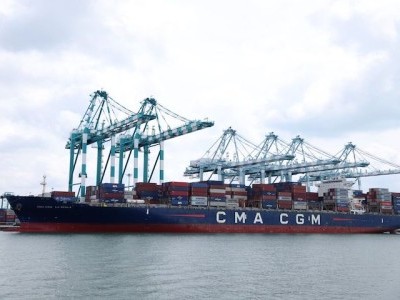
CMA CGM Announncement: PSS02 - From Asia to West Africa
View ArticleBND Commissioner Ralph Cowen completes final term
After more than a decade of dedicated service, Ralph Cowen, Commissioner, Place 1 of the Brownsville Navigation District (BND) concluded his final term. Cowen did not seek reelection in the…
View Article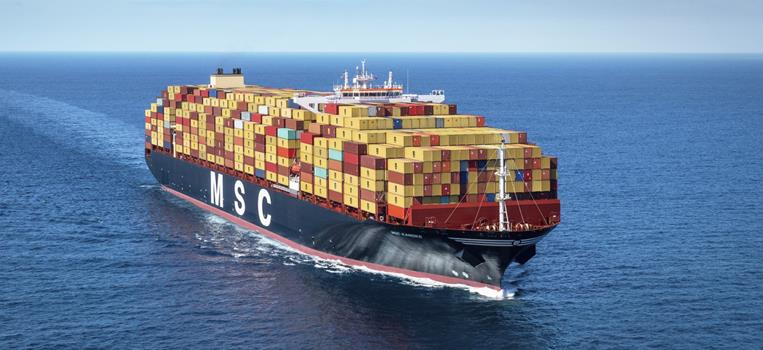
MSC Annoucement: GRI - General rate increase - CANCELLED
View Article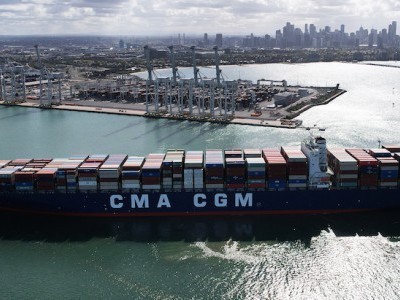
CMA CGM Expiration: Empty equipment imbalance surcharge - from Spain to East Mediterranean & Black Sea
View Article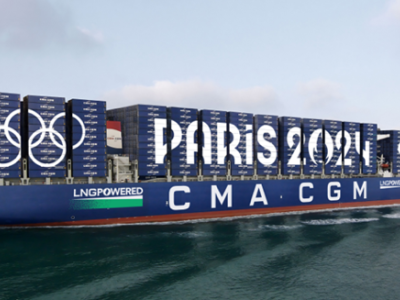
CMA CGM GREENLAND: Arrival of the Olympic Flame in Marseille
View ArticleGet the most up-to-date trending news!
SubscribeIndustry updates and weekly newsletter direct to your inbox!
